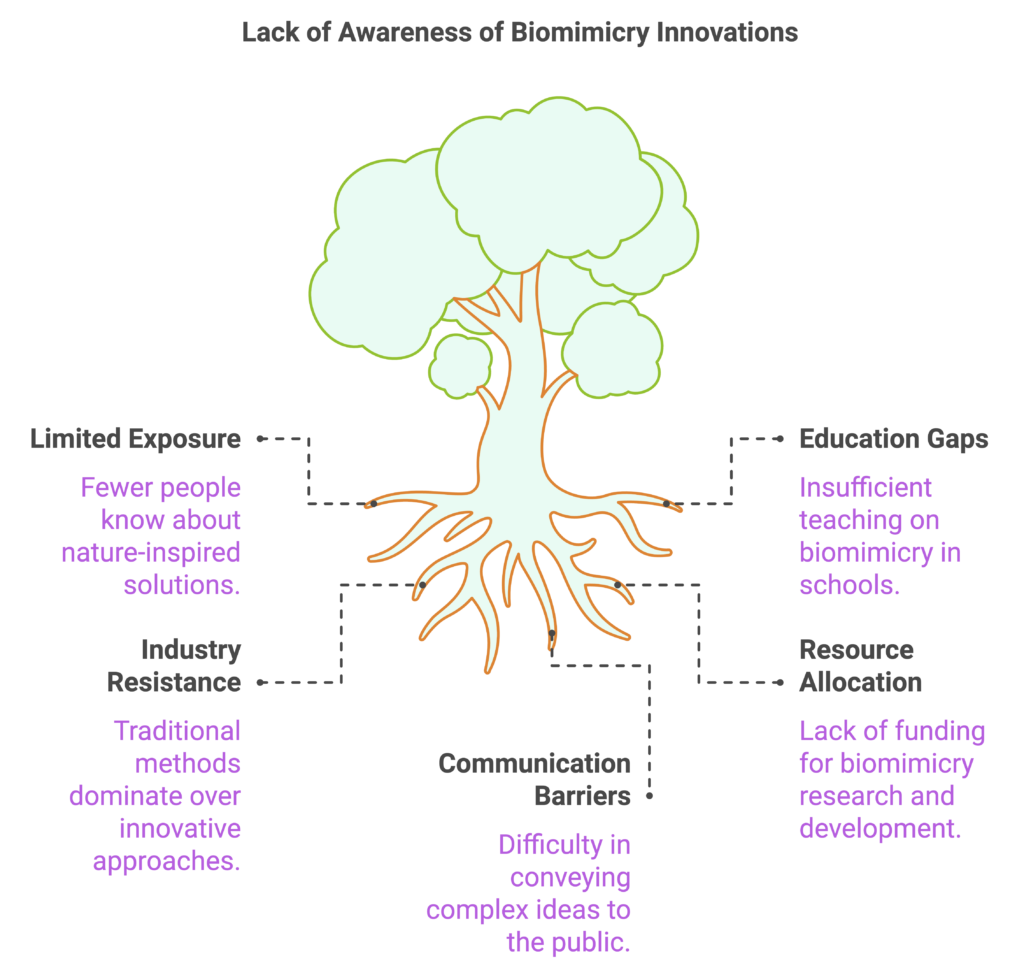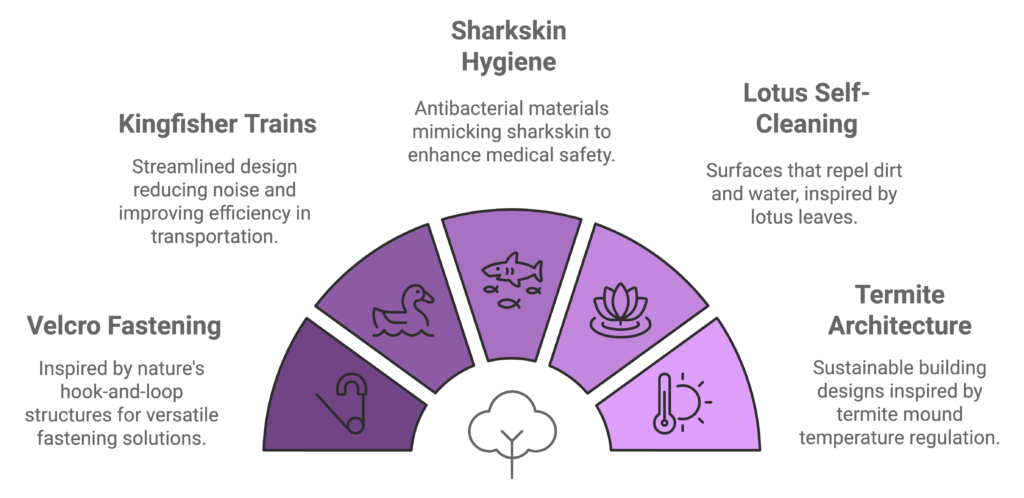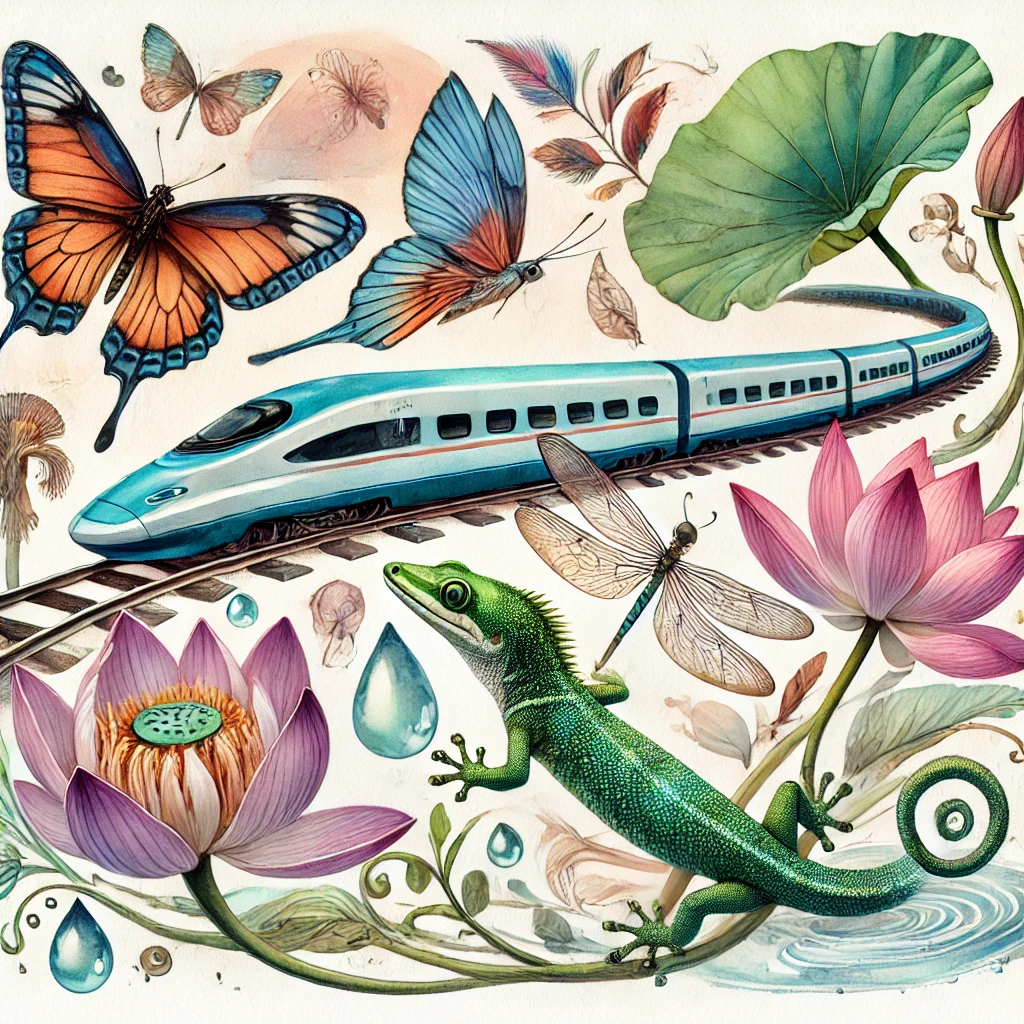We live in a time where innovation often feels synonymous with cutting-edge technology and digital solutions. However, some of the most revolutionary inventions in recent years have been inspired by the natural world.
This approach, known as biomimicry, involves studying and emulating nature’s designs to solve human challenges. From transportation to medical technologies, biomimicry is reshaping entire industries.
Here’s how 15 innovations, inspired by the natural world, are changing the course of modern development.

Velcro: A Forest Walk Leads to a Global Fastener Revolution
In 1941, Swiss engineer Georges de Mestral took a simple walk in the woods that led to one of the most influential inventions of the 20th century: Velcro. After noticing that burdock burrs clung to his dog’s fur, de Mestral examined the burrs under a microscope and discovered a hook-and-loop structure. This observation became the foundation for Velcro, a fastening system used in everything from clothing to spacecraft. The power of this invention lies in its simplicity—emulating the way nature creates adhesion without the need for glue or stitching.
Today, Velcro is used in countless industries. It revolutionized not only consumer products like shoes and backpacks but also medical devices, military gear, and even the aerospace sector. This invention underscores the importance of paying close attention to nature’s small yet effective mechanisms.
The Kingfisher and Japan’s Bullet Trains: High-Speed, Low Noise
Japan’s Shinkansen bullet train is known for its speed and efficiency, but in its early stages, the train faced a significant problem: the loud boom it produced when exiting tunnels. This noise was caused by the sudden pressure change when the train entered and exited confined spaces at high speeds. To solve the problem, engineers turned to nature, specifically the kingfisher bird.
The kingfisher’s beak is perfectly streamlined to allow it to dive into water with minimal splash, reducing pressure changes. By redesigning the front of the bullet train to mimic the kingfisher’s beak, engineers managed to significantly reduce noise, improve energy efficiency, and even increase the train’s speed. This application of biomimicry transformed the Shinkansen into not only a quieter mode of transportation but also a more environmentally friendly one.
Sharkskin: A Surprising Antibacterial Solution
Sharks are known for their predatory prowess, but their skin holds a secret that’s helping revolutionize medical hygiene. Sharkskin is covered in microscopic structures called dermal denticles, which reduce drag and prevent bacteria from adhering to the surface. Inspired by this natural design, scientists have developed antibacterial materials that mimic sharkskin. These materials are now used in hospitals to reduce infections and improve patient safety.
The application of this sharkskin-inspired technology in hospitals and other sterile environments has had a profound impact. By reducing bacterial growth, this innovation helps prevent the spread of infections, offering a cleaner, safer solution for healthcare facilities worldwide.
The Lotus Effect: Nature’s Answer to Self-Cleaning Surfaces
Lotus plants, despite growing in murky waters, remain remarkably clean thanks to the microscopic structures on their leaves. These structures repel water and dirt, a phenomenon now known as the “lotus effect.” Engineers have harnessed this natural self-cleaning property to create surfaces that remain spotless without the need for frequent cleaning.
This technology is now used in paints, glass, and even textiles. The surfaces require less maintenance and fewer cleaning chemicals, making them an environmentally friendly option for buildings, vehicles, and clothing. By mimicking the lotus leaf’s natural design, engineers have found a way to save time, resources, and reduce environmental impact.
Nautilus Shells and Energy-Efficient Fans
Nautilus shells and kelp fronds are marvels of natural design, capable of moving fluids efficiently in a spiral pattern. By studying these natural structures, Pax Scientific developed an energy-efficient fan that mimics the nautilus shell’s spiral fluid dynamics. This innovation allows fans to move air more effectively, reducing energy consumption in homes and businesses.
As industries and homes increasingly look for ways to cut energy usage, this nature-inspired fan design offers a more sustainable alternative to traditional models. The swirling patterns found in these natural organisms have provided engineers with a simple yet powerful way to improve mechanical efficiency.
Camouflage: Nature’s Stealth Mechanism Translated into Technology
Chameleons and cephalopods, such as octopuses, have perfected the art of camouflage, using complex patterns and textures to blend into their environments. Humans have applied this natural ability to military and hunting applications, developing materials that help wearers stay hidden in various environments.
Beyond military uses, researchers are looking at cephalopods to inspire new types of adaptive camouflage that could be used in fashion or in architecture to create surfaces that change color or texture. This adaptive technology could lead to innovations that change the way we think about design in both form and function.
The Namib Desert Beetle: Harvesting Water from Air
The Namib Desert beetle lives in one of the most arid environments on the planet, yet it has developed an extraordinary method for gathering water. Its shell is covered in tiny bumps that collect moisture from the air, which then rolls down into the beetle’s mouth. This simple yet effective system inspired engineers to develop fog-harvesting devices that collect potable water in dry regions.
These devices are now used in parts of the world where water scarcity is a critical issue. By mimicking the Namib beetle’s ability to harvest water from the air, engineers have created a sustainable solution that can help provide clean drinking water to millions.
Butterfly Wings and Mirasol Displays: The Future of Low-Energy Screens
Butterflies, particularly the vibrant morpho species, create their stunning colors not through pigments, but through the manipulation of light. Their wings are covered in nanoscale structures that reflect light in a way that creates vibrant colors. Inspired by this natural light manipulation, Qualcomm developed Mirasol displays for energy-efficient e-readers and other devices.
Mirasol displays use tiny mirrors to reflect ambient light, creating bright images while consuming far less power than traditional LCD screens. By emulating the butterfly’s light-manipulating properties, this technology offers a glimpse into the future of energy-efficient digital displays.
Fungi-Based Building Materials: A Sustainable Solution for Construction
Fungi, nature’s decomposers, have provided the inspiration for an entirely new class of building materials. Mycelium, the root-like structure of fungi, can be grown into strong, lightweight, and biodegradable materials that offer an eco-friendly alternative to traditional construction materials.
These mycelium-based materials are already being used to create insulation panels that are not only highly effective but also biodegradable. As the construction industry seeks more sustainable options, mycelium could become a key component in reducing the environmental impact of buildings.
Gecko-Inspired Adhesives: The Future of Reusable Stickers
Geckos can effortlessly scale walls thanks to the microscopic hairs on their feet, which create a natural adhesive force. Researchers have replicated this ability to create reusable adhesives that stick to surfaces without the need for glue or sticky substances.
These adhesives have numerous applications, from medical bandages that don’t irritate the skin to industrial tapes that are both strong and reusable. By mimicking the gecko’s natural adhesion system, scientists have developed a cleaner, more sustainable alternative to traditional adhesives.
Aquaporins: Nature’s Water Filters
Aquaporins are proteins found in cell membranes that allow water to pass through while blocking other molecules. Researchers have emulated this natural filtration system to create highly efficient water filters that can purify water with far less energy than traditional methods.
Aquaporin-based filters are now being used in water treatment plants, offering a sustainable solution to the world’s growing water scarcity problem. By turning to nature’s filtration systems, engineers have developed a technology that could provide clean water to millions without relying on energy-intensive purification processes.
Pitcher Plants and Slippery Surface Coatings
The carnivorous pitcher plant traps insects using a slippery surface that prevents them from escaping once they’ve fallen in. Inspired by this, engineers have developed surface coatings for containers that prevent substances like paint or food from sticking to the sides.
These slippery coatings reduce waste, make it easier to clean containers, and are particularly useful in industries that handle viscous substances like paint, food, or chemicals. By mimicking the pitcher plant’s natural trap, engineers have found a way to cut costs and reduce waste across multiple sectors.
Fire-Resistant Fabrics: Inspired by Pine Cones
Certain pine cones open and release seeds when exposed to fire, ensuring the survival of the species even in the aftermath of wildfires. Researchers have taken inspiration from this natural process to create fire-resistant fabrics that form a protective layer when exposed to heat.
These fabrics use non-toxic materials and offer a safer alternative to traditional flame retardants, which often rely on chemicals that can be harmful to both humans and the environment. By drawing from nature’s fire-adaptive strategies, engineers have developed a product that helps keep people safe in high-risk environments.
Solar Panels: Leaf-Like Efficiency
Plants have perfected the process of photosynthesis, converting sunlight into energy with remarkable efficiency. Researchers have used this natural blueprint to develop solar panels that mimic the structure of leaves. These panels feature folds and creases that channel more light into the cells, increasing energy output.
Leaf-inspired solar panels are significantly more efficient than traditional flat panels, making them a promising solution for renewable energy. By looking to nature’s time-tested methods for harvesting sunlight, engineers are pushing the boundaries of what solar power can achieve.
Termite Mounds: A Blueprint for Sustainable Architecture
In the African savannah, termites build mounds that maintain a stable internal temperature despite extreme fluctuations in the external climate. Architects have studied these mounds to design buildings with natural ventilation systems that reduce the need for air conditioning.
This termite-inspired architecture has already become a critical part of sustainable design in various hot climates. By utilizing natural ventilation and temperature regulation, these termite-inspired buildings require far less energy to maintain comfortable indoor environments, reducing both energy costs and carbon emissions. This approach represents a powerful shift toward biomimetic architecture, where the solutions to modern-day challenges lie in the natural systems that have existed for millions of years.

Conclusion
Biomimicry proves that nature, with its billions of years of evolutionary research and development, holds the key to solving some of our most pressing challenges.
Whether it’s creating low-energy transportation, improving medical hygiene, or developing sustainable building materials, the innovations inspired by nature have the potential to revolutionize industries while minimizing environmental impact.
By continuing to look to the natural world for inspiration, we can craft solutions that are not only more efficient but also more in harmony with the planet. Nature has already done the heavy lifting—it’s up to us to pay attention, learn, and apply these insights for a more sustainable future.
